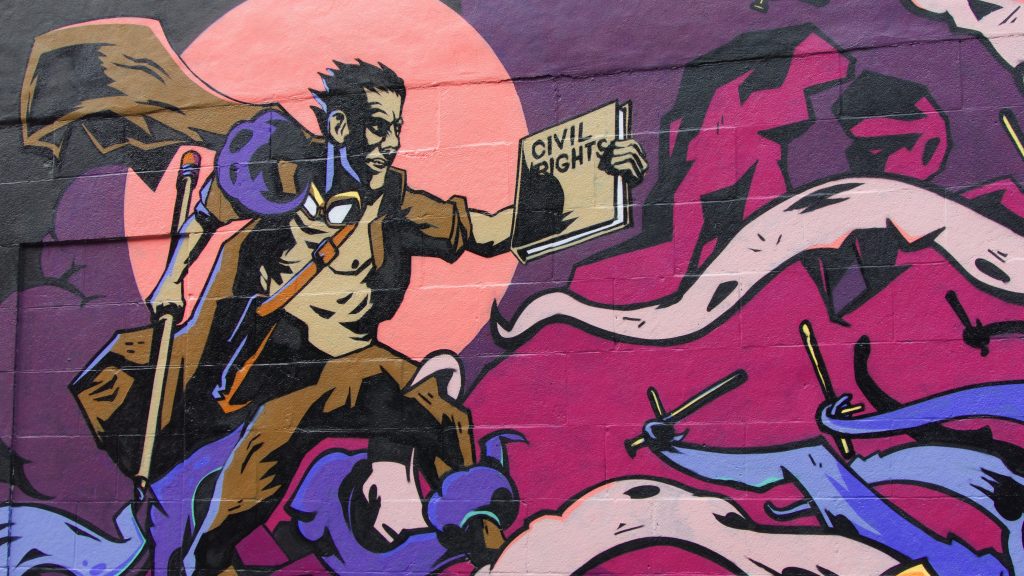Who are the Players?

This is the second of three parts of the Innovation Initiative’s special series on digital rights entitled “The State of Digital Rights”.
It is difficult to identify what objectively constitutes support for digital rights without internationally codified and enforced definitions of what digital rights actually are.
However, though no documents have officially been adopted in this way, actors like the United Nations’ (UN) Internet Governance Forum (IGF) are conducting an exemplary effort to cement international digital rights norms. The IGF is responsible for springboarding The Internet Rights and Principles Dynamic Coalition (IRPC) which is an “open network of individuals and organisations committed to making human rights and principles work for the online environment.” In 2011, the IRPC published the Charter of Human Rights and Principles for the Internet.
“This charter translates existing human rights for application to the internet environment.”
Part of this project has been the establishment of definitions for what digital rights are. Though this document has not been formally adopted by the UN, it serves as a guideline for understanding whether a particular effort — be it of civil society organisations (CSOs), governments, corporations or intergovernmental organisations (IGOs) — genuinely constitutes a defence of digital rights. With this in mind, we may proceed to look at these four groups to see how their work relates to the topic at hand.
CSOs:
CSOs dedicated to preserving and protecting digital rights operate across a broad spectrum. Some CSOs, such as AccessNow operate internationally “defending and extending the digital rights of users at risk around the world.” Others like Digital Rights Ireland and Digital Rights Watch in Australia work locally on the national level and concern themselves primarily with the activities of their own governments. Still others operate regionally, such as Social Media Exchange which focuses its activities on the Middle East and North Africa (MENA).

Generally, CSOs are limited in their influence because they are, by virtue of their operative place in society, not directly responsible for generating policy or conducting government. However, this does not mean that they are barred from meaningful impact. Their ability to operate in a sphere that is at once both non-political and grassroots provides them with certain advantages. Employing these advantages is done via a wide range of overlapping operational methods. For instance, some CSOs generate top-tier policy analysis (AccessNow, Center for Democracy & Technology, Electronic Frontier Foundation, Open Rights Group, Social Media Exchange, Public Knowledge) while others conduct education and activism (Digital Rights Watch, Digital Rights Ireland, Electronic Frontier Foundation, Open Rights Group). CSOs like Digital Rights Ireland tend to engage with lawmakers directly. For instance, currently, they are engrossed in a constitutional challenge against the Irish government relating to their policy of storing internet and phone records for the whole population. Still others, like Digital Rights Watch, focus on bolstering the end-user’s own capacity to operate freely in the digital landscape and combat surveillance. All of these methods are far from mutually exclusive. CSOs like the Electronic Frontier Foundation consistently operate in both spheres conducting policy analysis and grassroots activism simultaneously.
European Digital Rights is an example of a CSO that coordinates the local efforts of other CSOs in order to focus attention on privacy, surveillance, net neutrality, and copyright reform. For more information see the map of the digital rights landscape generated by Open Rights Group which documents the range of organisations and people active in the cause of preserving digital rights. Together all these CSOs and more form a network dedicated to establishing and protecting digital rights.
Governments:
CSOs are not alone in their efforts to promote digital rights. Despite current trends indicating a decreased global respect for human rights by governments worldwide, many individual governments are joining the struggle to define and maintain digital rights. These are a few of the more prominent examples that we highlighted in a previous post.

- In 2009, France’s highest court proclaimed that access to the Internet is a basic human right.
- Costa Rica’s Supreme Court has stated that information technology is, “a basic tool to facilitate the exercise of fundamental rights”.
- Estonia’s government has argued that access to the Internet is essential for life in the 21st century.
- By 2015, Finland’s Ministry of Transport and Communications claimed that every person in Finland was to be guaranteed access to a 100 Mbit/s Internet connection.
- The Constitution of Greece states that all persons have the right to participate in the Information Society.
Companies:
Since before 2008, global companies in the information and communications technology (ICT) sector have been collectively aware of pressure applied by governments to violate internationally recognised human rights norms. In order to withstand and reject this pressure, they formed a collaboration with civil society organisations, investors, and academics to protect and advance the freedom of expression and privacy. This collaboration became the Global Network Initiative (GNI) and includes such participants as Google, Microsoft, the Telia Company, and Yahoo. These companies among others have taken steps to “stimulate shared learning on how to best respect freedom of expression and privacy.” Telia, for example, is working to report on all major markets with regard to law enforcement disclosure requests and legislation related to surveillance and direct access. Microsoft is working to facilitate tech companies to sign the Cybersecurity Tech Accord, which is a “public commitment among more than 60 global companies to protect and empower civilians online and to improve the security, stability and resilience of cyberspace.” According to its 2018 Corporate Social Responsibility (CSR) report, Microsoft helped 61 tech companies join this year. What the IGN represents is an engagement and trust building exercise in a highly competitive field. ICT companies are having to take a hard look at the role that they are playing in either supporting human rights or being complicit in attacking them. Following the letter of the law means nothing when that law results in a violation of human rights. These companies now must band together and take a stand to unequivocally reject compliance with corrupt practices of disproportionate surveillance at the intersection of technology, business, and human rights.
Harrington Investments, one of the potential members, reportedly dismissed the GNI as a voluntary code of conduct that will not likely have much impact. Chief executive John Harrington instead called for bylaws to be introduced that force boards of directors of companies to accept digital rights responsibilities. Criticism against efforts such as the GNI is perhaps expected given the inherent lack of transparency that is built into the international system of stark business competition. But despite this, the GNI persists and grows stronger. Short of reformatting their bylaws, tech companies are continuing to take active steps to advance digital rights.

An emerging CSO/company coalition is Design 4 Democracy, which is a “group of democracy and human rights organisations around the world that is committed to ensuring that the technology industry embraces democracy as a core design principle.” Group members include the International Republican Institute, National Democratic Institute, International Foundation for Electoral Systems, National Endowment For Democracy, and perhaps most interestingly, Facebook, Twitter, and Microsoft. These three companies have established an engagement with human rights organisations in an attempt to better align their respective systems with fundamental digital rights. To this end, Civil Rights Defenders’ Innovation Initiative will offer expertise and guidance from a human rights perspective. The overall purpose of this cooperation is to galvanise a shift in digital media in a way that will support technology that brings out the best in humanity and challenges technology that encourages the worst. The behaviour of Facebook and Twitter users have certainly exemplified both sides. This wide variance of behaviour was largely possible because of the internal digital structures that Facebook and Twitter had built. Now, with support from Design 4 Democracy they are taking a look at how to actively encourage more ethical user interaction. It will certainly be engaging to see what outcomes this initiative ends up producing in the future.

IGOs:
In December 2013, the United Nations General Assembly (UNGA) adopted resolution 68/167, which expressed deep concern at the negative impact that surveillance and the interception of communications may have on human rights. Through this resolution, the UNGA requested that the High Commissioner for Human Rights report on the right to privacy. This report was presented to the Human Rights Council at its 27th session and to the General Assembly at its 69th session. The High Commissioner encouraged interested parties to weigh in on the issue of digital rights. The Council of Europe and the European Data Protection Supervisor (EDPS) provided responses declaring themselves as protectors of digital rights. To address the problems highlighted in resolution 68/167, the Council of Europe published a Guide to Human Rights for Internet users. Its aim is to help users better understand the rights they enjoy in the online environment and provide them with guidance on what to do when their rights are challenged. The EDPS will support the High Commissioner for Human Rights report by continuing to “ensure that European institutions and bodies respect the right to privacy and data protection when they process personal data and develop new policies.”

Another recent example from the European Union (EU) and the European Economic Area (EEA) is the passing of the General Data Protection Regulation (GDPR). This law is determined to protect the data and privacy of all EU and EEA citizens. It seeks to embed a “data protection by design and by default” setting into all business processes that handle personal data. This means that businesses handling data within the EU and EEA and/or exporting personal data beyond those limits must by default use the highest-possible privacy settings in their products and services. This is a change from before when products and services typically featured the lowest-possible privacy settings, which informed users could opt to change if they were so inclined. This granted companies the greatest-possible range of freedom to use personal data to their own benefit, often without the informed consent of their users. Since GDPR, personal data should not be made publicly available without the explicit, informed consent of the users concerned. Additionally, the data’s subject must be granted the right to revoke this consent at any time. GDPR represents a positive shift in the relationship that companies had to personal data.

To sum, this article features a few choice players in the digital rights scene. In reality, there are far more actors in play than those mentioned here. Will these efforts be enough to defend human rights against the seemingly daily onslaught of authoritarian infringements? This remains to be seen. We at Civil Rights Defenders will keep a close eye on these trends and keep you updated. Stay tuned for next week’s post when we will address the forums available for digital rights actors to exchange know-how and aggregate experience.


